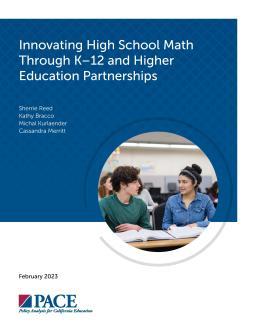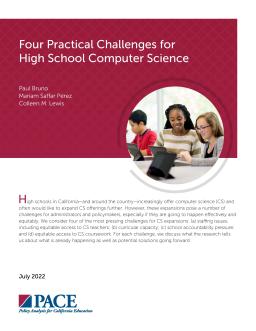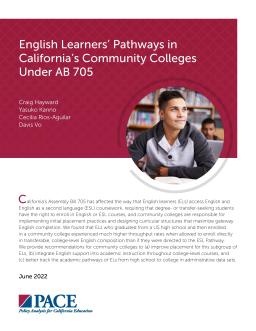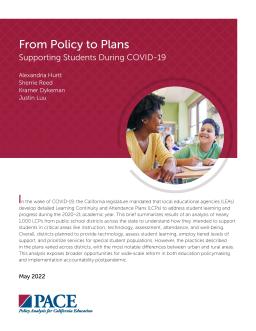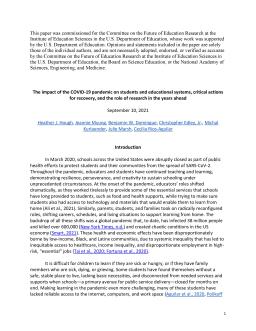February 2023 | Case study, Report
Access to and success in advanced math courses are not equal among high school students, with only about half of California seniors enrolling in these courses. To address this, six partnerships between university faculty and high school math specialists developed Advanced Innovative Math (AIM) courses. This report highlights the benefits of these partnerships and their common features of successful intersegmental partnerships, supplemented by case studies of each partnership.
July 2022 | Policy brief
California high schools face challenges in expanding computer science (CS) programs due to staffing issues, curricular capacity, school accountability pressure, and equitable access to CS coursework. This report discusses potential solutions based on research for each challenge.
June 2022 | Policy brief
Assembly Bill 705 in California allows ELs to enroll in college-level English composition, and colleges must design curricula and placement practices that maximize English completion. ELs who graduated from US high schools and enrolled directly in college-level English had higher throughput rates than those directed to ESL Pathway. Recommendations include improving EL placement, integrating English support in academic instruction, and better tracking EL academic pathways in administrative data sets.
Supporting Students During COVID-19
June 2022 | Policy brief, Working paper
An analysis of Learning Continuity and Attendance Plans (LCPs) developed by local educational agencies in California during the 2020-21 academic year showed variations in practices across districts, particularly between urban and rural areas. While districts planned to provide technology, assess student learning, and offer tiered levels of support, broader opportunities for reform and implementation accountability in education policymaking are needed post-pandemic.
Critical Actions for Recovery and the Role of Research in the Years Ahead
September 2021 | Article
IES issued a report on the future of education research at the National Centers for Education Research and Special Education Research. The report identifies issues, details new methods and research investments needed in the future. PACE produced a paper to synthesize existing evidence in the field and frame recommendations. Public input and outside experts were also consulted.
Pagination
- Previous page
- Page 4
- Next page
